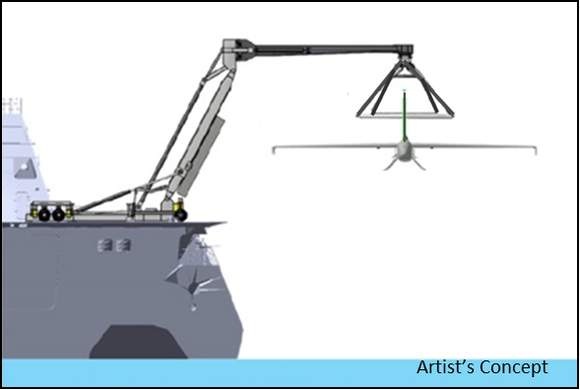DARPA hasn’t yet given official confirmation of “who won” the TERN contract. But this month, one of the two contestants told us who lost. Specifically, on September 22, AeroVironment announced that it “was not selected to receive a phase III contract for DARPA’s Tern program.” Given that the only other company competing for TERN was Northrop Grumman, that leaves Northrop as the Phase III TERN contract winner, by default.
Two contractors won contracts for phase 1 (preliminary design) and phase 2 (elaboration of the design) work on TERN. In each phase, defence contracting giant Northrop Grumman and drone specialist AeroVironment won funding from DARPA — about $22 million apiece. Although we do not know which company submitted which design, we know that at least two TERN concepts have been submitted so far. The next step will be to pick one of these concepts to build on — and pick a contractor to progress to phase 3, build a full-scale prototype, and test it.
What it means for AeroVironment… and for Northrop Grumman
Breaking the bad news to investors, AeroVironment was quick to allay concerns that losing the TERN contract would hurt it financially. AeroVironment said the decision is actually “immaterial” to the company.
Winning phase 3 may not be particularly “material” to Northrop Grumman, either — at least initially. In its role as the Pentagon’s bleeding edge R&D department, DARPA is not known for laying out vast quantities of cash on early research, even into a program as potentially game-changing as TERN. Even as the victor in this competition, Northrop Grumman probably won’t expect to pull in more than a few extra tens of millions of dollars from winning phase 3 of TERN, per se. What will be really interesting to see, though, is what happens if Northrop Grumman achieves its ultimate goal and wins a production contract for TERN.
Here’s how the math works: Ballpark the cost of building a TERN drone capture-and-relaunch system at the amount of money already sunk into Northrop’s R&D work — $22 million per system. Now, multiply that amount by the number of ships that could potentially be outfitted with TERN.
According to the U.S. Naval Register, there are currently 272 ships in the “Battle Forces.” Conveniently, 72 of these are submarines. That means that the likely value of a comprehensive program to outfit all U.S. Navy ships with TERN is an easy 200 times $22 million calculation: $4.4 billion — or about 44% of annual revenues at Northrop Grumman’s Aerospace Systems division, which is responsible for drone projects. Figure out a way to equip submarines with TERN, and the revenue opportunity rises to $6 billion — 60% of annual AS revenues, according to data from S&P Capital IQ.
So what’s the upshot for investors? None of this money is set in stone just yet. TERN might cost more, or less than $22 million per unit, for one thing. The Navy might choose to roll it out to fewer than 272 ships or… build more ships and grow the TERN program.
Either way, one thing is clear: TERN is a program with multibillion-dollar potential. And right now, it’s Northrop Grumman’s for the taking.
Source: Motley Fool


There is another ‘potential’ tern alternative. And that would be a multi-mode drone. One that is both a high speed fixed wing drone and also a verticle takeoff and landing vehicle. I can conseptualize this and send it to Northrup.